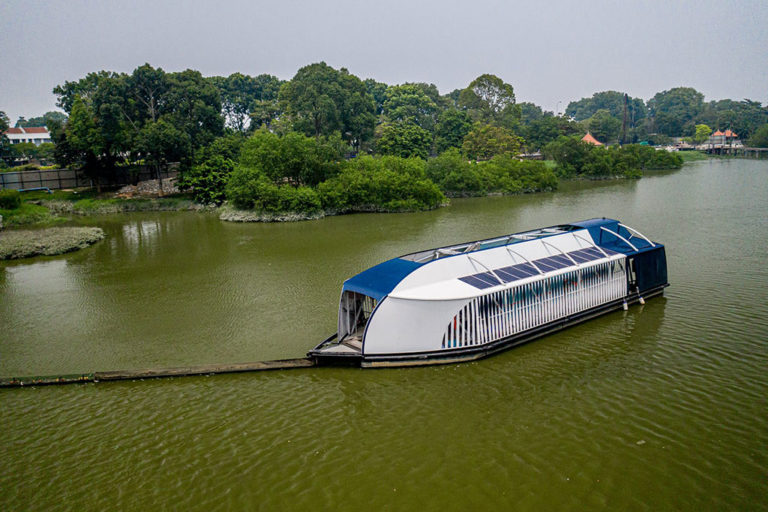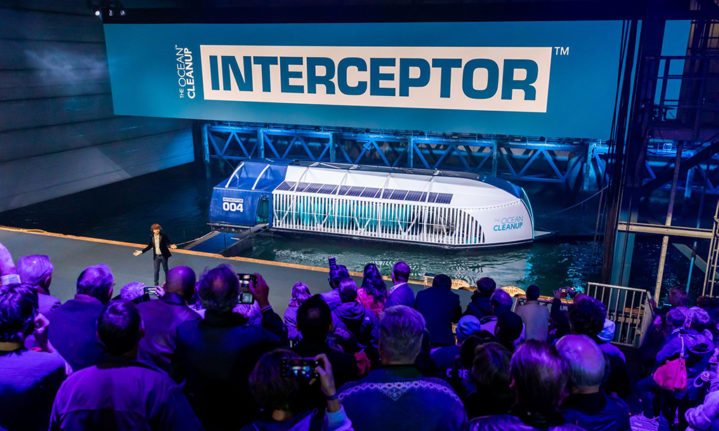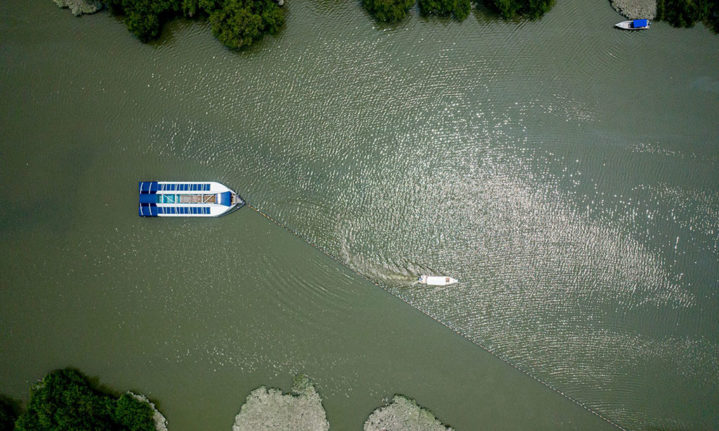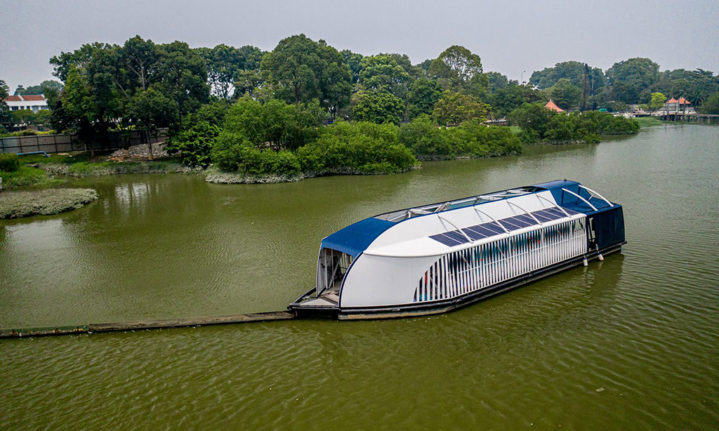The first scaleable solution to prevent river plastic from entering the ocean is a solar-powered device called the Interceptor. The floating contraption designed by The Ocean Cleanup has already been anchored to riverbeds to autonomously siphon trash out of the water as it flows past.

The Interceptor™ is The Ocean Cleanup’s answer for river plastic waste. Image credit: The Ocean Cleanup
The Ocean Cleanup, a non-profit that designs and develops cleanup systems to remove plastic from the oceans, announced at a recent press conference that up to 80% of plastic entering the ocean originates from 1,000 heavily polluted rivers around the world.
Boran Slat, the 25-year-old CEO, explained that the few solutions previously developed to prevent river plastic from entering the oceans have been highly localized, and that ‘what we need is a global solution… one integrated system that you can bring anywhere in the world, install within days and that just works’.
The Interceptor is meant to be just that.

The Ocean Cleanup announced a new device to catch plastic in rivers during a press conference on October 26. Image credit: The Ocean Cleanup
The device is anchored where the greatest amount of plastic flows, with another one slightly downstream to catch any debris that may have escaped the first Interceptor.
The waste collected by the Interceptor is pulled out of the water by a conveyor belt and distributed across six dumpsters located on a separate barge. Once full, it automatically notifies local operators, who will take the barge back to shore to be emptied for recycling.

Trash is distributed to dumpsters via a conveyor belt. Image credit: The Ocean Cleanup

The Interceptors will be placed in strategic locations in rivers to make sure the main plastic flow is intercepted, meanwhile allowing for boats to pass. Image credits: The Ocean Cleanup
The Interceptor is said to extract more than 50,000kg of waste per day when functioning at optimum performance and, with its lithium-ion batteries, can work day and night without producing noise or exhaust fumes.
The innovative solution has already been installed and is operational in two locations: Jakarta, Indonesia, and Klang, Malaysia. In both cases, the Interceptor was recognized by local governments as a means of bolstering their own river clean-up efforts.
Interceptor™ 001 is already cleaning in Indonesia, and Interceptor™ 002 is cleaning in Malaysia. This used to be one of the heaviest polluting rivers in the world! Our goal is to tackle #1000rivers in 5 years’ time. pic.twitter.com/UnqKlW8u2f
— The Ocean Cleanup (@TheOceanCleanup) October 26, 2019
A third Interceptor is currently on its way to Chan Tho in the Mekong Delta in Vietnam, with a fourth destined for the Dominican Republic.
Over 5 trillion pieces of plastic currently littler the ocean. If left unchecked, the plastic will impact natural ecosystems, human health and the global economy.
‘Putting something in a river is not going to solve everything,’ says Laurent Lebreton chief scientist at The Ocean Cleanup, ‘but it will help going upstream and trying to change behaviour.’.
Working together with governments and private companies, The Ocean Cleanup aims to tackle the 1,000 most-polluting rivers in five years’ time.
Featured image: The Ocean Cleanup
























